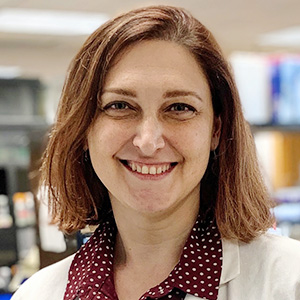Can we make grad school more welcoming for all?
The U.S. is rapidly diversifying — within 30 years, more than half of its citizens will identify as Hispanic, Black, Native American, Asian American and/or Native American Pacific Islander, according to the Census Bureau, and the number of Americans younger than 44 will increase by 23%. These diverse young people will comprise the next two generations of biomedical researchers.
Of the roughly 4,000 colleges and universities in the U.S., more than 800 are minority-serving institutions, meaning they enroll a significant percentage of the groups listed above. However, only a dozen of those 800 are R1 research institutions. This means the students at most of the institutions training the next generation of science, technology, engineering and mathematics professionals do not reflect the country’s diversifying demographics.
Moreover, most faculty and administrators at these institutions trained at least a decade ago, and their student experiences likely differed in many ways — including cost of living, expectations of work/life balance, attention to personal mental health, career preparation and societal pressures. These differences compound a gap in experience and cultural understanding that has a direct impact on graduate STEM education.
For some perspectives on common challenges and effective supports in graduate education, I talked to four of my former students. All are alumni of Texas State University (a public, R2, Hispanic-serving institution) and are now enrolled in doctoral programs at predominantly white institutions. My own training was entirely at such institutions before I joined Texas State as a faculty member 10 years ago. Our conversations identified places where students feel the impact of an academic, financial and cultural divide during their graduate training experiences.
Finances
All students must balance inflation and increasing tuition rates with income, loans and scholarships. Students from historically minoritized groups disproportionately lack money from their families to pay for college. In graduate school, strategies that worked when they were undergrads often no longer apply.
When Ari Paiz, a fifth-year grad student at the University of Texas Southwestern Graduate School of Biomedical Sciences in Dallas, needed additional income as an undergraduate at the University of Texas at Austin, she picked up additional shifts as wait staff at a local restaurant.
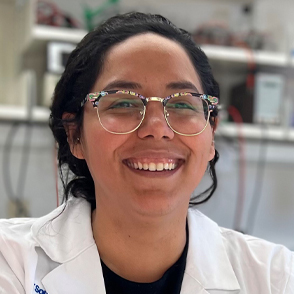
“I definitely make more now, but it feels like I’m stuck at this income, no matter how much I work,” she said. “In Austin, I could hustle for a week or two and make what I needed to balance my cash flow.”
Most grad students must relocate for their program before they start to receive their training stipend. Moving can be expensive, and students may lack the personal savings or funds from extended family to absorb the cost.
José Castro, a fourth-year student at Emory University, had to pay out of pocket to move from Boston to Atlanta. Although he had worked in the private biotech sector for nearly three years, he had to ask his sister and parents for the money to move. Similarly, fifth-year Emory student Alejandro Oviedo charged thousands of dollars in truck rental and deposits to his credit card to relocate to Atlanta from central Texas.
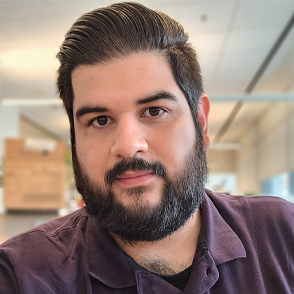
Castro encountered an additional complication with his training stipend: Some apartment complexes do not consider such stipends to be income, so they don’t allow graduate students to be primary lease-holders. Although he had a long history of independent renting in both San Marcos and Boston, Castro had to ask his brother-in-law for help to lease his first apartment in Atlanta.
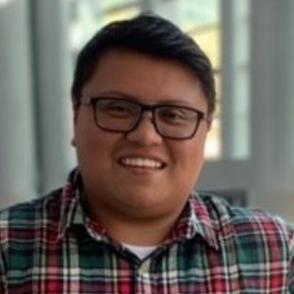
Graduate student stipends must keep pace with inflation to ensure a living wage. When I started my PhD program in 2003, my annual stipend was $22,500 — equivalent to $37,700 today. Sources offer varying figures, but most stipends now range from $20,000 to $40,000.
Focused advocacy by the Graduate Student Union caused the biochemistry department at the University of Colorado Boulder to raise its training stipend to $40,000 in fall 2024. Julia Roberts is a fifth-year graduate student at UC Boulder.
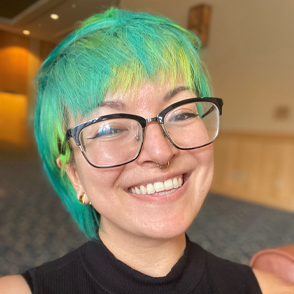
“This increase is in response to significant increases in costs of living, both increasing rent prices in the Front Range (an area near Boulder) and consequences of recent economic inflation for necessities,” Roberts said.
Inside the stipend lies a hidden curriculum for grad students. While they are students within their disciplines and degree programs, many institutions consider them employees within the institutional financial structure. They must navigate benefits selection (including retirement), health insurance and the nuances of tax liabilities for training stipends versus salaries. Along with being in a new academic environment, this can be intimidating, especially for students who have not held salaried positions with benefits before.
During Castro’s second year at Emory, he was partially supported by a training grant, which covered 70% of his stipend. However, he discovered on his own that reporting that income wasn’t the same as filing a W-2; the university gave him no information on how to file taxes for the part of his income provided by a federal grant. He asked other students in the program for guidance. Nearly all grant-supported trainees face this issue.
Personal experience and cultural expectations about tax return preparation vary. For example, if one’s family of origin doesn’t have a history of paying an accountant to prepare taxes, it can feel like an unnecessary indulgence.
Tax preparation comes with liabilities, and it’s understandable why universities generally decline to provide specific tax advice. However, training programs could support graduate students of all backgrounds by providing financial literacy seminars or boot camps, perhaps collaborating with local resources and/or current students to describe potential ways new students can manage their personal finances.
“Providing students with the adequate tools to become responsible adults would be a win–win situation for any graduate program,” Castro said. “As trainees, we’d feel appreciated and valued as part of the research enterprise.”
Some of these tools are in place at certain institutions and can be adapted for doctoral programs. UT Southwestern has a student financial advisor and offers a financial literacy class as part of orientation for first-year medical school students. Ari Paiz and the school’s Graduate Student Association are working with the dean of the graduate school to offer these resources to first-year Ph.D. students, too.
Family and community of origin
Students often carry the expectations of their families. It is a major achievement to be the first in one’s family to earn a bachelor’s degree. Some families may wonder why a student seeks additional schooling in a doctoral program. Institutions can address these questions in recruitment and outreach activities.
For example, a now-concluded Bridges to Baccalaureate program at Texas State included a poster day and luncheon where students’ families were invited to learn about their scholar’s research project and about careers in biomedicine that are accessible with postsecondary degrees. Similar approaches are currently being implemented by programs at other institutions, including Yale University and the Educational Partnership Program, to support undergraduate and graduate trainees.
In some cultures, students are expected to contribute a portion of their stipend to the extended family. Funding agencies and research institutions pay stipends to defray the cost of training — not to build personal wealth or financial security. However, a student’s family may see a regular monthly check as a way to give back to the family that supported them through school.
While the four alumni interviewed for this article have not experienced that familial pressure, I have observed it directly in both undergraduates and graduate students at Texas State; to protect students’ identities, I cannot describe specific circumstances.
Families may also expect to see their grad student frequently, especially if the student came home one or two weekends a month from a nearby undergraduate institution. That pattern likely is not feasible when the student is enrolled in a far-away doctoral program.
When traveling between major cities — such as Boston and Houston — a student can choose from an array of flights and shop for bargain fares. However, when flying from Boston to Laredo, a border town whose airport only has three gates, the options are more limited. For a one-week trip, the time spent in layovers and the cost of tickets ($600–$700 for off-peak flights) might make a grad student question if it’s worth it. For Castro it is, but he must budget his time and money for a big visit to his immediate family just once a year.
Connections and social experiences
A grad student from a historically marginalized group is likely to feel the burden of doing something that’s new to them and their community. This can manifest in being expected to contribute money to their family, still being a student when their high school peers are in the workforce, or enduring cold Midwest winters after growing up in the warmth of the Rio Grande Valley.
Students can end up feeling disconnected from their support network and needing to build a new support system in their training environment with new people. The need for that new network begins right away. Students can feel isolated trying to balance the rigors of graduate training with family expectations, financial obligations and adapting to new local cultures.
As Spanish-speaking Americans, Castro and Oviedo said it’s easier to connect with people who also speak Spanish or share similar experiences. Their program at Emory has only four Hispanic students (Mexican Americans and Puerto Ricans) out of about 55 across all matriculation years. Castro feels the most connected with this small group, who faced and overcame the same challenges to get to the doctoral program. When he reflects on how non-Hispanic students connect with each other, he said they appear to bond over the multiple states they’ve lived in, where they have traveled or other experiences that, for the most part, are unfamiliar to him and his fellow Latino students.
This is where mentors become especially important. A mentor does not need to create a perfect support system or be a demographically identical role model. Rather, they need to understand that trainees need a supportive academic community and that such a community can exist in harmony with rigorous scientific training. Mentors can provide opportunities for natural and inclusive community building within the research group, the department and the broader research community.
The most successful community-building events are low-stakes and have small activation energies. Potlucks are always popular to encourage more interaction, but Roberts said her CU Boulder lab uses holidays as the theme for regular get-togethers.
“We have done card or cookie decorating for Valentine’s Day, pumpkin painting for Halloween and Secret Santa for Christmas,” she said, adding that this has helped her group decompress from science and build personal connections that gird their day-to-day professional interactions.
At Texas State, students in the materials science engineering and commercialization Ph.D. program host an annual MSEC potluck at the end of the academic year, where students, postdocs and faculty share dishes from their respective cultures. Similarly, Paiz said the molecular biophysics program at UTSW has incorporated an occasional fun day in place of their regular works-in-progress student seminars. This paid off during their winter 2023 gingerbread house construction workshop.
“Both students and faculty enjoyed the activity, and it opened up an organic dialogue about diversity in our program,” Paiz said. “As a result of our conversation, the UTSW biophysics program hosted staff from Student Wellness, and people were able to express that we need more psychologists of color for those who want to talk with someone from a similar background.”
In any and all such unofficial-but-official activities, organizers need to recognize that not all students want to participate in community-building that blends the personal and professional. While opportunities to share in each others’ lives are important, we can’t force anyone to join in. By fostering the growth of organic support networks, mentors establish a culture of inclusion and respect that supports individual students and buffers the risk of tokenizing anyone.
Academic training opportunities
Institutions have developed strategies to include and support students from historically marginalized groups, including so-called diversity grants and scholarships. Many of my own students at Texas State have been eligible for diversity preview weekends, scholarships, training programs or fellowships, all of which are distinguished from opportunities that do not have eligibility requirements.
Several of my Latino alumni have been encouraged or expected to apply for the National Institutes of Health diversity-focused F31 fellowship funded by the National Institute of General Medical Sciences, while their peers working on similar projects apply for F31 fellowships funded by other institutes.
To the sponsoring faculty mentor, such diversity grants may simply seem an ideal match of funding opportunity and qualified applicant, no different than matching a research grant proposal with a funding agency’s new initiative. However, some trainees say they feel like they’re being directed to a grant because of their race, ethnicity or economic background, emphasizing their differences from their peers. This works against the stated intention of such programs to bolster access to and inclusion in academic science.
To benefit from diversity-promoting training programs, grants and fellowships, students need to feel included, not othered. Active and sincere reframing of the opportunity can help, but this requires authentic and consistent support from mentors and institutions.
Instead of approaching these opportunities as consolation prizes, my four alumni say they have come to look at them as open doors. Our collective experiences with a diverse population of students — both at Texas State and at our respective Ph.D. institutions — have demonstrated that different doors are open to every student.
I’ve had the benefit of considerable social privilege: Both of my parents have postgraduate degrees, supported my pursuit of science and were able to financially and materially support each of my early-career transitions from grad school through to my first faculty position. I know how lucky I was that my father was able to and enjoyed pulling a trailer cross-country.
Castro, Oviedo, Paiz and Roberts identified their interests in biomedical research a few years later than I did and used the terminal master’s program at Texas State to prepare for doctoral programs. As Latinos, Castro, Oviedo and Paiz were eligible for the South Texas Doctoral Bridge Program; as the daughter of a retired veteran, Roberts was supported in part by federal and state veteran’s benefits.
All these opportunities have value; each of us walked through the door presented to us, and we all matriculated to rigorous and relevant doctoral training programs.
Resources
Cultural competence within institutions, programs, departments and research groups can support the development of both individual students and a vibrant, inclusive and successful training environment.
When broadly applied, strategies to incorporate cultural awareness, cultural competence and inclusive practices can improve the experiences of all students and the outcomes of entire programs.
The National Academies of Science, Engineering and Medicine reviewed the critical role of mentoring in its 2019 report “The Science of Effective Mentoring in STEMM.” NASEM has built an interactive online guide and a two-season podcast to accompany this report.
To support everyone engaged in research training — students, faculty, and staff — the Center for Improvement of Mentored Experiences in Research offers evidence-based curricula, training and resources.
The annual Understanding Interventions conference brings together researchers, evaluators and faculty in STEM and the behavioral and social sciences to exchange ideas, foster new research and build innovative programs that improve STEM training and diversity.
College and university administrators may seek to use their leadership roles to effect institutional change. Several national programs offer conferences, online resources, tailored grant programs and community for such initiatives:
- The Equity in Graduate Education Resource Center at the University of Southern California
- The Hispanic Association of Colleges and Universities Dean’s Forum
- The American Association for the Advancement of Science STEM Equity Achievement–Change Program
Enjoy reading ASBMB Today?
Become a member to receive the print edition four times a year and the digital edition monthly.
Learn moreGet the latest from ASBMB Today
Enter your email address, and we’ll send you a weekly email with recent articles, interviews and more.
Latest in Opinions
Opinions highlights or most popular articles

Sketching, scribbling and scicomm
Graduate student Ari Paiz describes how her love of science and art blend to make her an effective science communicator.

Embrace your neurodivergence and flourish in college
This guide offers practical advice on setting yourself up for success — learn how to leverage campus resources, work with professors and embrace your strengths.

Survival tools for a neurodivergent brain in academia
Working in academia is hard, and being neurodivergent makes it harder. Here are a few tools that may help, from a Ph.D. student with ADHD.

Hidden strengths of an autistic scientist
Navigating the world of scientific research as an autistic scientist comes with unique challenges —microaggressions, communication hurdles and the constant pressure to conform to social norms, postbaccalaureate student Taylor Stolberg writes.

Black excellence in biotech: Shaping the future of an industry
This Black History Month, we highlight the impact of DEI initiatives, trailblazing scientists and industry leaders working to create a more inclusive and scientific community. Discover how you can be part of the movement.

Attend ASBMB’s career and education fair
Attending the ASBMB career and education fair is a great way to explore new opportunities, make valuable connections and gain insights into potential career paths.

